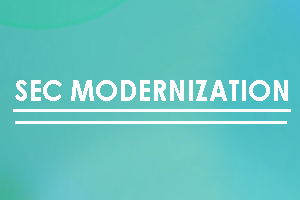 Originally published on Brown Brothers Harriman’s On the Regs blog
Originally published on Brown Brothers Harriman’s On the Regs blog
The SEC finalized its reporting modernization and liquidity rules late last year. What are you hearing are some key implementation challenges for firms specific to these rules?
Many firms know there will be an associated cost to their operations, but they are having difficulty quantifying the impact due lack of guidance and time tables from the regulator. These decisions include constructing a data strategy, investing in technologies, revamping processes, staffing, and vendor management.
The SEC has provided Form N-PORT cost projections at the per-fund level, but the industry doesn’t seem confident in these estimates. Firms have reached out to the SEC to see when they can expect additional information around question interpretation, technical guidance and compliance information. For now, though, the SEC has not disclosed when they will release more information.
If the most recent updates to the SEC’s Form N-MFP have taught us anything, it is that even after more guidance is supplied, the regulator will continually make changes to their requirements up until the first production filing and even in the first several months of filings. That the SEC is not making any Form N-PORT filings public for six months “to make adjustments to fine-tune the technical specifications and data validation processes”[1] should give you an indication of how long they think it will be until things stabilize. Buckle up.
Reporting Modernization will now require funds to file monthly regulatory reports. How will the frequency of the reporting change the approach to regulatory filings?
Traditionally, when a new regulation is required to be submitted, it is integrated within a fund administration team’s responsibilities. However, each additional regulation now puts further stresses on a well-established process that must be completed in a production cycle. The phasing out of N-Q and N-SAR filings do not negate the cost of N-PORT and N-CEN.
Monthly filing obligations are nothing new to the global fund industry. CBoI (Central Bank of Ireland), BCL (Banque centrale du Luxembourg) and CSSF (Commission de Surveillance du Secteur Financier) are just a few agencies that require some form of fund filing that is transmitted monthly (and sometimes in even shorter time frames). To meet these requirements, many European firms have invested in automation and process improvement to ensure a cost-effective, repeatable and timely filing. Now that the SEC has joined the monthly-filing club (outside of Form N-MFP), U.S. firms are using this as opportunity to reevaluate how they solution their regulatory needs and are taking lessons from Europe on how to address the situation.
Aside from the burden of getting the filings completed, what is the most challenging data component within Reporting Modernization?
Please don’t make me pick just one. Eighty percent of the data is already used in financial reporting today. The remaining 20 percent lives in three main categories: Risk, Liquidity and T + 1 accounting data. These are not new concepts to the fund industry, but they are not typically used for U.S.-based financial reporting purposes. Firms are addressing these concerns through internal data strategy initiatives and/or working with third-party vendors that specialize in these data services.
Although, many firms have stated to Confluence that it is eye-opening to see that a lot of the information required by Form N-PORT is already in-house and it is just a matter of increasing the frequency of generating this data.
Fund data is the primary focus for these regulations. Without knowing what the SEC will specifically do with that data, is there anything that asset managers can do now to get ahead?
Create a data strategy that clearly defines all data inputs, calculations, and identifies the change-control process. As my colleague, Paul Soltis, wrote in a blog last year, the SEC will have a lot of data at their disposal for compliance and examination testing and are in a good position to use it. There is an appropriate saying in arithmetic class that still gives me nightmares, “You do not get full credit unless you can show your work.” Once the SEC gets their footing with Form N-PORT, they will ask for back-up at some point, and no one wants to be in a situation where they cannot show their work.
Regulators publically provide some additional guidance on top of the formal regulation through FAQs, technical documentation and data dictionaries. However, their internal compliance checks and industry analysis tools are a closely guarded secret. These tools help them find exceptions that range in complexity from, “Question X must reconcile with the Question Y” all the way to, “This filer answered Question A two standard deviations lower than the industry norm.” Firms that have the confidence in their answers, and the data to back up their answers, will be positioned well when they get the dreaded request from the regulator.
If asset managers haven’t yet started their implementation, what is critical for them to do in the short term?
Evaluate the impact that this regulation will have on their operations. It’s easy to say that the most of the data and skill sets to support this regulation are within an organization’s wheel-house. However, just accepting the cost to support this rule without evaluating scalable solutions isn’t something I would recommend. Start a working group internally that focuses on putting together a list of risks and then come up with an actionable plan. The June 2018 filing will be here before we know it.
[1] https://www.sec.gov/rules/final/2016/33-10231.pdf (page 39)